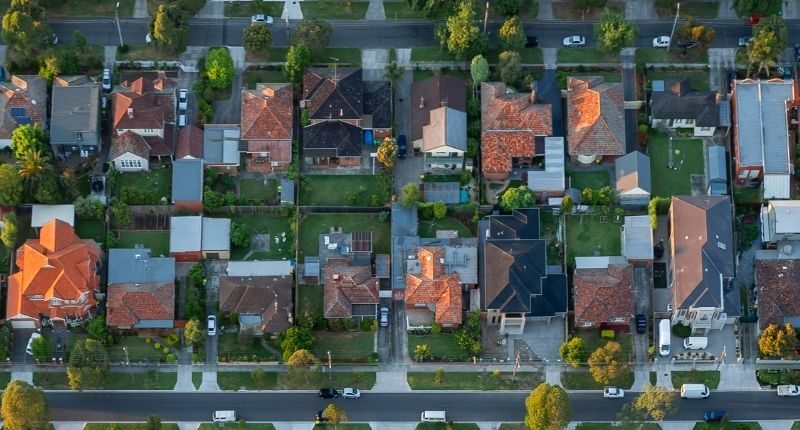- The 1.3% decline in July takes house values to a level 2% below the peak in April, although some capital cities saw prices rise
- CoreLogic's House Value Index surged by 28.6% during the pandemic
- Regional centres were not immune, recording a decline too
Dwelling values across Australia fell by -1.3% in July, the third consecutive negative month, according to recently released CoreLogic data.
The fall follows a 28.6% surge throughout the pandemic, with values now 2% below the peak in April, according to CoreLogic’s House Value Index.
Five of the eight capital cities recorded a month-on-month decline in July, with Sydney (-2.2%) and Melbourne (-1.5%) leading the way. Brisbane recorded a 0.8% decline – the first time its entered such territory since August 2020 – with Canberra (-1.1%) and Hobart (-1.5%) also down.
Darwin (0.5%), Adelaide (0.4%) and Perth (0.2%) bucked the trend, although growth has slowed down significantly since the first interest rate hike in May.
Tim Lawless, CoreLogic’s Research Director, expects housing market conditions to worsen as the internet rate continues to rise, with the Reserve Bank expected to raise the cash rate again tomorrow.
“The rate of growth in housing values was slowing well before interest rates started to rise, however, it’s abundantly clear markets have weakened quite sharply since the first rate rise on May 5,” he said.
“Although the housing market is only three months into a decline, the national Home Value Index shows that the rate of decline is comparable with the onset of the global financial crisis (GFC) in 2008, and the sharp downswing of the early 1980s.
Tim Lawless, CoreLogic
“In Sydney, where the downturn has been particularly accelerated, we are seeing the sharpest value falls in almost 40 years.
“Due to record high levels of debt, indebted households are more sensitive to higher interest rates, as well as the additional downside impact from very high inflation on balance sheets and sentiment.”

Regional markets lower
Regional markets have not been immune from the decline in the capital cities. The combined regional index fell by 0.8% o July, the first monthly decline since August 2020.
Regional New South Wales, Victoria, Queensland and Tasmania recorded decline, with modest rises in Regional South Australia (1.1%) and Regional Western Australia (0.1%).
Despite this, regional markets are still outperforming their capital city counterparts.
“Dwelling values across CoreLogic’s combined regionals index were up 41.1% from the pandemic trough to the June peak, compared with a 25.5% rise across the combined capitals index,” Mr Lawless said.
“The stronger growth reflects a significant demographic shift towards commutable regional markets, which is likely to have some permanency as more workers take advantage of formalised hybrid employment arrangements.”
Unit values across the capital cities have declined too, by 1%.
“This trend is most apparent across the three largest capitals as well as Canberra, where housing affordability challenges may be deflecting more demand towards the medium to high density sector,” Mr Lawless said.
“Additionally, firmer interest from investors should favour the unit market over houses where demand has historically been more concentrated.”
Mr Lawless noted that in the lead up to spring, advertised stock levels will become a focus.
“Based on the pre-COVID average, we have typically seen an 18.9% rise in the number of new listings between the winter and spring seasons,” he said.
“A more substantial flow of advertised stock against a backdrop of falling demand is great news for active buyers, who will have more choice and less urgency, but bad news for vendors, who could find selling conditions become more challenging as advertised stock levels rise.”
“By late spring or early summer, we could be seeing advertised stock levels trend higher than normal. Vendors are likely to be more competitive across a smaller pool of active buyers, which would drive clearance rates lower across auction markets, and could result in longer selling times and larger discounting rates for private treaty sales.”








